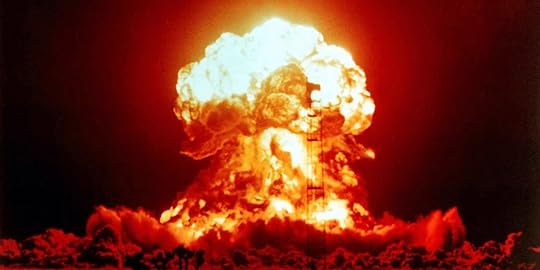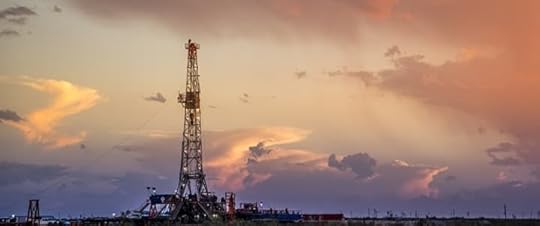Steve Bull's Blog, page 1250
November 22, 2017
Washington’s Wars

Washington’s Wars
The New York Times reported on October 22 that the United States has “just over 240,000 active-duty and reserve troops in at least 172 countries and territories,” which is a staggering total. But in an intriguing revelation the Times reported that there are a further 37,813 troops deployed “on presumably secret assignment in places listed simply as ‘unknown.’ The Pentagon provided no further explanation.”
It is not surprising that Washington’s war-spreaders do not supply information to the American public concerning the location of soldiers, sailors, marines and airmen involved in clandestine operations around the globe, because this might bring to light the lack of justification for such deployments. Concurrent with denial of information, however, is an energetic campaign aimed at convincing Americans that everything to do with military strength is laudable and that those who voice the slightest criticism of the armed forces are unpatriotic or even traitorous.
The American public, including the many who maintain a sane and even-handed approach to military expansion, are in general (if one may use that word in this context) much in favour of the military. For example, they love seeing and hearing marching musicians at public functions, but it is not the love of music that has motivated the Pentagon’s conductors to allocate over 400 million dollars a year on 130 military bands.
Don’t get me wrong: as a former soldier I am much in favour of these bands. There are few things more rousing and toe-tapping than a drumming, thumping, immaculately dressed, triple ranked, step-perfect batch of hooters and tooters. They’re marvellous. And they’re one of the best psychological operations weapons that the Pentagon has got to convince the citizens of America that their military is perfect.
The bands draw vast crowds at sports events and all sorts of community gatherings, and even the most kind-hearted, sweet tempered pacifist citizen can hardly fail to be moved to ecstatic flag-happiness by the joyful tunes of unbridled patriotism.
…click on the above link to read the rest of the article…
Helm and the death of UK wind and solar
 In his recent post on the Helm Review Euan Mearns predicted that Helm’s recommendation that “intermittent producers need to bear the cost of converting intermittent to firm capacity” will, if adopted, “sound the death knell for new wind and solar projects in the UK”. This post presents ball-park estimates of the economic impacts of Helm’s recommendation for two cases – wind-plus-storage and wind-plus-CCGT. The wind-plus-storage case is uneconomic at any reasonable carbon price and the wind-plus CCGT case is at best marginally competitive with alternative generation sources. These results suggest that Euan’s prediction is probably correct for wind and probably for solar too, although I did not review any solar cases.
In his recent post on the Helm Review Euan Mearns predicted that Helm’s recommendation that “intermittent producers need to bear the cost of converting intermittent to firm capacity” will, if adopted, “sound the death knell for new wind and solar projects in the UK”. This post presents ball-park estimates of the economic impacts of Helm’s recommendation for two cases – wind-plus-storage and wind-plus-CCGT. The wind-plus-storage case is uneconomic at any reasonable carbon price and the wind-plus CCGT case is at best marginally competitive with alternative generation sources. These results suggest that Euan’s prediction is probably correct for wind and probably for solar too, although I did not review any solar cases.
First a brief disclaimer on Helm’s “firm capacity” recommendation. It can be interpreted to mean that intermittent producers would have to convert their output into 100% dispatchable form before it can be sent to the grid, and for the purposes of analytical simplicity I have assumed here that this interpretation is the correct one. However, Helm’s recommendation refers not to “firm capacity” but to “equivalent firm capacity”, which according to Helm:
…. focuses on the de-rated capacity value to the system of the different forms of generation. As the cost of addressing intermittency falls with DSR and storage, so the de-rating factors lessen.
In three pages of explanation (beginning on page 192 of his review) Helm fails to make it clear how these de-rated capacity factors are to be calculated, and because I don’t know how to calculate them either I have ignored the potential impacts of a de-rating approach.
Estimating wind generation
Rather than attempt a market-wide study I structured this review around a hypothetical 1GW offshore wind farm in the North Sea, the annual generation from which I assumed would be proportional to the generation achieved by Danish offshore wind farms in 2016 (hourly data from P-F Bach). I then performed the following operations:
…click on the above link to read the rest of the article…
U.S. Generals Might Stop Trump From an Illegal Nuclear Strike–But Who Will Save Us From a Legal One?

Photo: Galerie Bilderwelt/Getty Images
U.S. GENERALS MIGHT STOP TRUMP FROM AN ILLEGAL NUCLEAR STRIKE — BUT WHO WILL SAVE US FROM A LEGAL ONE?
HE HAS BECOME the latest in a long line of generals to be lionized by the anti-Trump #resistance. Speaking over the weekend, Gen. John Hyten, commander of the U.S. Strategic Command, or STRATCOM, which is responsible for nuclear deterrence, revealed what he would do if he were ordered to carry out a nuclear strike.
“I provide advice to the president,” Hyten told an audience at the Halifax International Security Forum in Nova Scotia, Canada. “He’ll tell me what to do, and if it’s illegal, guess what’s going to happen? I’m gonna say, ‘Mr. President, that’s illegal.’” Hyten continued: “Guess what he’s going to do? He’s going to say, ‘What would be legal?’ And we’ll come up with options of a mix of capabilities to respond to whatever the situation is, and that’s the way it works. It’s not that complicated.”
At first glance, Hyten’s statement may sound comforting to those who stay awake at night, worrying about Trump’s small hands hovering over the nuclear button. Last week, for the first time for more than 40 years, the Senate Foreign Relations Committee held a hearing on the president’s authority to launch nuclear weapons. “We are concerned that the president of the United States is so unstable, is so volatile … that he might order a nuclear weapons strike that is wildly out of step with U.S. national security interests,” Sen. Chris Murphy, D-Conn., said at the hearing.
Senior members of Trump’s inner circle seem to share those concerns. In October, Vanity Fair’s Gabriel Sherman reported that “one former official even speculated that [chief of staff John] Kelly and Secretary of Defense James Mattis have discussed what they would do in the event Trump ordered a nuclear first strike. ‘Would they tackle him?’ the person said.”
…click on the above link to read the rest of the article…
England Inches Down the Road to Serfdom

England Inches Down the Road to Serfdom
Hayek’s whole purpose in writing this chapter, “The Totalitarians in Our Midst,” serves as a warning to his readers.
Hayek has spent the last few chapters of The Road to Serfdom explaining the roots and rise of totalitarian governments. In chapter twelve, Hayek highlighted prominent Marxist theorists who would later lay the roots for the German National Socialist party.
Hayek’s whole purpose in writing this chapter, “The Totalitarians in Our Midst,” serves as a warning to his readers. The mass death of WWII had devastated and shocked the world. But unless individuals were able to identify how totalitarianism had taken over Europe in the first place, they would be ill-prepared to prevent it from happening again.
It was for this reason that Hayek uses chapter thirteen to demonstrate to his readers that a similar perversion of truth was already occurring among England’s intellectual elite as had occurred in the leadup to the Third Reich.
Individualism in Danger
England, which, as explained in the last chapter, represented the origin of individualist thought, had steadily been heading down a similar road as Germany had in the decades prior to WWII. While it may have taken a different form, when looked at from the perspective of totalitarianism in all things economic, England, as it stood in 1944, had taken swift strides away from liberalism and instead found itself headed in the direction of complete central authority.
It is for this reason that Hayek’s writing sounds so urgent in this chapter. As fresh as WWII was in the minds of all people, Hayek is urging them to not become complacent. It was not enough to mourn the recent past; they needed to proceed vigilantly and look to the enemies in their own nations.
As Hayek writes:
…click on the above link to read the rest of the article…
Averting the apocalypse: lessons from Costa Rica
 Earlier this summer, a paper published in the journal Nature captured headlines with a rather bleak forecast. Our chances of keeping global warming below the 2C danger threshold are very, very small: only about 5%. The reason, according to the paper’s authors, is that the cuts we’re making to greenhouse gas emissions are being cancelled out by economic growth.
Earlier this summer, a paper published in the journal Nature captured headlines with a rather bleak forecast. Our chances of keeping global warming below the 2C danger threshold are very, very small: only about 5%. The reason, according to the paper’s authors, is that the cuts we’re making to greenhouse gas emissions are being cancelled out by economic growth.
In the coming decades, we’ll be able to reduce the carbon intensity of the global economy by about 1.9% per year, if we make heavy investments in clean energy and efficient technology. That’s a lot. But as long as the economy keeps growing by more than that, total emissions are still going to rise. Right now we’re ratcheting up global GDP by 3% per year, which means we’re headed for trouble.
If we want to have any hope of averting catastrophe, we’re going to have to do something about our addiction to growth. This is tricky, because GDP growth is the main policy objective of virtually every government on the planet. It lies at the heart of everything we’ve been told to believe about how the economy should work: that GDP growth is good, that it’s essential to progress, and that if we want to improve human wellbeing and eradicate poverty around the world, we need more of it. It’s a powerful narrative. But is it true?
Maybe not. Take Costa Rica. A beautiful Central American country known for its lush rainforests and stunning beaches, Costa Rica proves that achieving high levels of human wellbeing has very little to do with GDP and almost everything to do with something very different.
…click on the above link to read the rest of the article…
Can The Gas Glut Kill The Permian Boom?

The Permian basin continues to add new oil production, but shale drillers in West Texas could face an unexpected problem: too much natural gas.
Natural gas is produced as a byproduct when drilling for oil. Oil tends to be more lucrative, so shale companies typically target oil in places like the Permian, and the gas is considered an added benefit. However, the Wall Street Journal reports that shale drillers in the Permian are struggling with too much gas and not enough places to put it.
The gas pipelines from the West Texas shale fields are at capacity. To the north, the market is saturated with gas from the Rockies and Canada, the WSJ says. And while there are several natural gas pipelines under construction that would carry gas from Texas to Mexico, those projects are not yet online. One key pipeline, the Gulf Coast Express, won’t come online until 2019, and several other projects have similar timelines.
While Permian producers really want to continue to ramp up oil production, they are extracting more gas than they know what to do with. The result is plunging spot prices for gas. According to the WSJ, the Waha trading hub in West Texas has gas selling for 57 cents/MMBtu below Henry Hub prices. With Henry Hub at roughly $3/MMBtu, that puts West Texas gas at something like $2.50/MMBtu.
But gas output is expected to continue to climb. With no space left on any pipelines, prices will continue to crater. Analysts, according to the WSJ, see gas prices in the region dropping further, potentially trading for a $1/MMBtu discount relative to Henry Hub.
(Click to enlarge)
…click on the above link to read the rest of the article…
November 21, 2017
Lebanese Army On “Full Combat Readiness” At Southern Border To Counter “Israeli Enemy”
Two days after Israel provided the first ever official confirmation of covert ties with Saudi Arabia, a step many analysts see as a precursor to future conflict in the Middle East involving adversaries Iran and Lebanon, on Tuesday the head of the Lebanese Army told the military to be at “full combat readiness” to face “the Israeli enemy” at the country’s southern border. The announcement comes as Arab nations, including Saudi Arabia, vow to tighten their grip on Lebanon’s Hezbollah militia.
“The army needs to be prepared to “confront the threats and violations of the Israeli enemy and its hostile intentions against Lebanon,” Joseph Aoun said on Tuesday, while urging the army to cooperate with United Nations forces in Lebanon under UN Security Council Resolution 1701, adopted to resolve the 2006 Israel-Lebanon conflict. The statement came after Lebanese President Michel Aoun said that “Israeli targeting still continues and it is the right of the Lebanese to resist it and foil its plans by all available means,” according to Reuters.
 الجيش اللبناني
الجيش اللبناني @LebarmyOfficial
@LebarmyOfficialقائد الجيش للعسكريين: أدعوكم إلى الجهوزية التامة على الحدود الجنوبية لمواجهة تهديدات العدو الإسرائيلي وخروقاته، وما يبيّته من نيّات عدوانية ضد لبنان وشعبه وجيشه، كما إلى السهر الدائم على حسن تنفي
2:06 AM – Nov 21, 2017
President Aoun’s remarks were echoed by Lebanese Foreign Minister Gebran Bassil, who also cautioned Tel Aviv against sparking a war, according to RT. Lebanon is ready to act, but will do its utmost to prevent Israel from an invasion, he told RT last week. “We should restrain Israel from starting a war exactly because Lebanon is sure to win it,” he said.
…click on the above link to read the rest of the article…
Inflation and Gold – Precious Metals Supply and Demand
Reasons to Buy Gold
The price of gold went up $19, and the price of silver 42 cents. The price action occurred on Monday, Wednesday and Friday though so far, only the first two price jumps reversed. We promise to take a look at the intraday action on Friday.
 File under “reasons to buy gold”: A famous photograph by Henri Cartier-Bresson of a rather unruly queue in front of a bank in Shanghai in 1949 in the final days of Kuomintang rule. When it dawned on people that the communists couldn’t be stopped, they frantically tried exchange their government-issued paper money for gold. In preparation for its exodus to Taiwan, the Kuomintang regime had forced everyone to exchange their gold, silver and foreign exchange for a new paper currency, the Jingyuanquan in 1948 (“golden yuan”) – which it promptly inflated with gay abandon, belying its name. It then tried to combat rising prices with price controls – a strategy that has reliably failed since at least the times of the Roman Empire. It reversed the policy a few months later, as even its main supporters became thoroughly fed up. The people in the picture above were among those who had clearly waited too long to take advantage of this policy reversal. [PT]
File under “reasons to buy gold”: A famous photograph by Henri Cartier-Bresson of a rather unruly queue in front of a bank in Shanghai in 1949 in the final days of Kuomintang rule. When it dawned on people that the communists couldn’t be stopped, they frantically tried exchange their government-issued paper money for gold. In preparation for its exodus to Taiwan, the Kuomintang regime had forced everyone to exchange their gold, silver and foreign exchange for a new paper currency, the Jingyuanquan in 1948 (“golden yuan”) – which it promptly inflated with gay abandon, belying its name. It then tried to combat rising prices with price controls – a strategy that has reliably failed since at least the times of the Roman Empire. It reversed the policy a few months later, as even its main supporters became thoroughly fed up. The people in the picture above were among those who had clearly waited too long to take advantage of this policy reversal. [PT]
But first, we want to clarify something in light of our ongoing commentary about the struggles of the debtors and the lack of drivers for rising consumer prices. Just because farmers and restaurateurs are frantically producing and selling like mad, which results in soft prices, does not mean that people cannot begin to buy gold in earnest again.
…click on the above link to read the rest of the article…
Where Does It End?

It’s nothing new.
Whenever a major country is in decline and approaching collapse, a contingent arises that does everything it can to speed up the process toward collapse. This is always done in the same way:
Vilify the established rulers as being the culprits for the nation’s woes.
Establish simplistic arguments to support that view. (The arguments need not be entirely logical or supportable, but they must have emotional public appeal.)
Create simplistic rhetoric that supports the destruction of the establishment and its icons.
Make the arguments and rhetoric as ubiquitous as possible (particularly through the media).
Then, like any recipe, turn up the heat and bake until done.
Generally, the destruction of the first icon (most often a statue) requires some sort of explanation, regardless of how flimsy the argument may be. After that has succeeded, praise is to be showered on those who took part, egging them, and others, on to do more. As each new icon falls, less justification is necessary and, in the end, only blind anger is required to keep the destruction going.
In the present era, we’re witnessing this age-old process taking place in quite a few countries, but notably in the US.
But, why the US—the one country in the world that began as possibly the most advanced, freest nation the world had ever seen? How did this come to pass in “the land of the free”?
Well, truth be told, no matter how inspired or sincere the founding fathers of any nation may be, those who would usurp them are always many in number and, in most cases, are prepared to do whatever it takes to slowly take power and return to tyrannical rule.
…click on the above link to read the rest of the article…
Bank Of America Analyst: A ‘Flash Crash’ In Early 2018 ‘Seems Quite Likely’
 Is the stock market bubble about to burst? I know that I have been touching on this theme over and over and over again in recent weeks, but I can’t help it. Red flags are popping up all over the place, and the last time so many respected experts were warning about an imminent stock market crash was just before the last major financial crisis. Of course nobody can guarantee that global central banks won’t find a way to prolong this bubble just a little bit longer, but at this point they are all removing the artificial support from the markets in coordinated fashion. Without that artificial support, it is inevitable that financial markets will experience a correction, and the only real question is what the exact timing will be.
Is the stock market bubble about to burst? I know that I have been touching on this theme over and over and over again in recent weeks, but I can’t help it. Red flags are popping up all over the place, and the last time so many respected experts were warning about an imminent stock market crash was just before the last major financial crisis. Of course nobody can guarantee that global central banks won’t find a way to prolong this bubble just a little bit longer, but at this point they are all removing the artificial support from the markets in coordinated fashion. Without that artificial support, it is inevitable that financial markets will experience a correction, and the only real question is what the exact timing will be.
For example, Bank of America’s Michael Hartnett originally thought that the coming correction would come a bit sooner, but now he is warning of a “flash crash” during the first half of 2018…
Having predicted back in July that the “most dangerous moment for markets will come in 3 or 4 months“, i.e., now, BofA’s Michael Hartnett was – in retrospect – wrong (unless of course the S&P plunges in the next few days). However, having stuck to his underlying logic – which was as sound then as it is now – Hartnett has not given up on his “bad cop” forecast (not to be mistaken with the S&P target to be unveiled shortly by BofA’s equity team and which will probably be around 2,800), and in a note released overnight, the Chief Investment Strategist not only once again dares to time his market peak forecast, which he now thinks will take place in the first half of 2018, but goes so far as to predict that there will be a flash crash “a la 1987/1994/1998” in just a few months.
That certainly sounds quite ominous.
…click on the above link to read the rest of the article…





